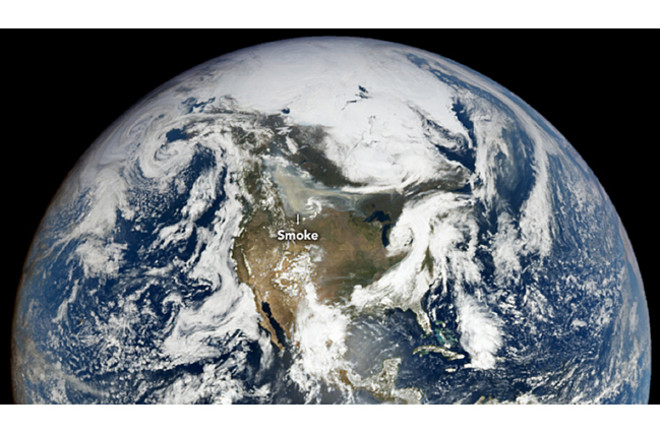In recent news, the Canadian wildfires caused a major uproar worldwide, catching the attention of people everywhere. What’s even more astounding is that NASA has now revealed imagery showing just how thick and widespread the smoke was, as it was visible to a spacecraft almost a million miles away from Earth. The captivating image was captured by NASA’s Earth Polychromatic Imaging Camera (EPIC) on NOAA’s DSCOVR satellite on May 20, 2023. The smoke appears in the form of a massive swirling cyclone, earning it the name “smoke cyclone/smokestorm” by climate scientist Daniel Swain.
While the smoke cyclone is clearly visible in the image, the full extent of the smoke is not immediately apparent. However, the Terra satellite, orbiting at a closer distance of just 438 miles above the Earth’s surface, provides a clearer view. On May 20, the smoke, originating from wildfires in Alberta, became entrapped by a large low-pressure system spinning counterclockwise over Canada and the United States. The circulation pattern of this system, along with a long tail of smoke stretching over 1,500 miles across North America, can be distinctly observed.
Interestingly, despite being over 2,000 times farther away from us than the Terra satellite, the EPIC camera on DSCOVR still managed to capture a glimpse of that smoke tail. Although it is faint in the image, a careful examination reveals its presence. DSCOVR, short for the Deep Space Climate Observatory spacecraft, serves the important purpose of keeping a constant eye on both the Sun and the sunlit side of our planet from its exceptionally distant vantage point known as Lagrange Point 1.
The primary role of DSCOVR is to monitor the Sun, specifically looking out for massive eruptions of particles and magnetic fields that could potentially affect Earth. Thanks to its position, DSCOVR can provide advanced warning, ranging from 15 to 60 minutes, before these eruptions, known as coronal mass ejections (CMEs), reach us. These CMEs have the potential to disrupt satellites, communication systems, and electrical grids. Additionally, DSCOVR’s EPIC instrument enables the measurement of ozone levels, aerosols, cloud reflectivity, cloud heights, and other scientific variables. Yet, one of its most compelling features is its ability to provide a unique and distant photographic perspective of our beautiful home planet.
